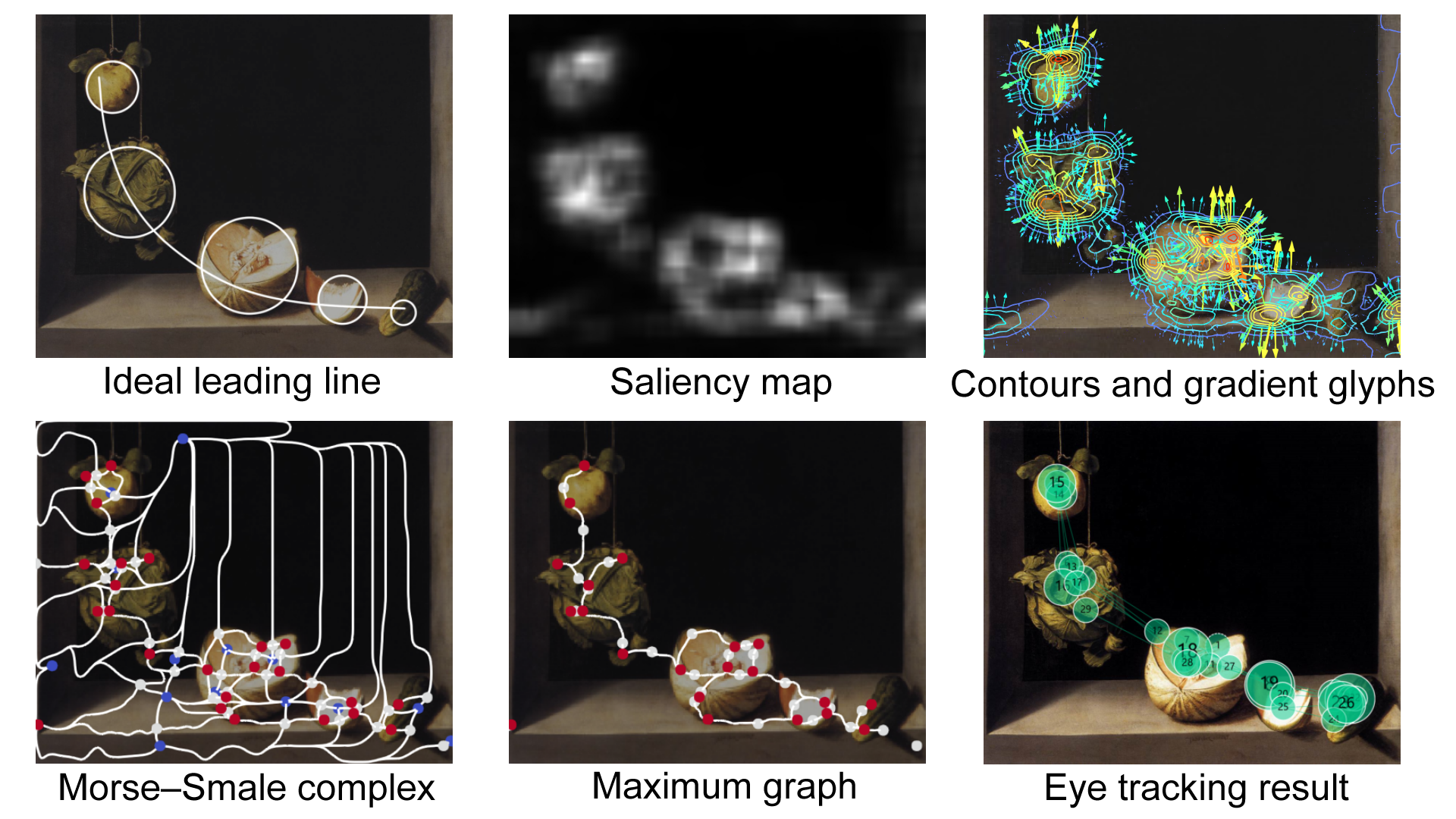Topological Analysis and Approximate Identification of Leading Lines in Artworks Based on Discrete Morse Theory
Fuminori Shibasaki, Issei Fujishiro
Room: 104
2023-10-24T22:00:00ZGMT-0600Change your timezone on the schedule page
2023-10-24T22:00:00Z

Fast forward
Full Video
Keywords
Feature Detection, Extraction, Tracking & Transformation ; Other Application Areas ; Art & Graphic Design ; Data Analysis, Reasoning, Problem Solving, and Decision Making ; Perception & Cognition ; Personal Visualization, Personal Visual Analytics ; Application Motivated Visualization ; Data Abstractions & Types ; Human-Subjects Qualitative Studies ; Graph/Network and Tree Data ; Image and Video Data ; Scalar Field Data ; Computational Topology-based Techniques ; Saliency Map ; Leading Lines ; Eye Tracking
Abstract
Accomplished artists often incorporate leading lines into their compositions to guide the observer's attention. Although saliency maps are typically employed to locate attractive regions in still images, such scalar features do not express the trajectory of an observer's gaze. In this study, we propose a method for the visual analysis and approximate identification of leading lines based on maximum graphs, sparse subsets of Morse--Smale complexes, extracted from saliency maps. We provide empirical evidence substantiating the feasibility of our method through a comparison with actual observers' eye tracking results. Further, we investigate the limitations of our approach by employing it to analyze a variety of artworks with diverse styles.